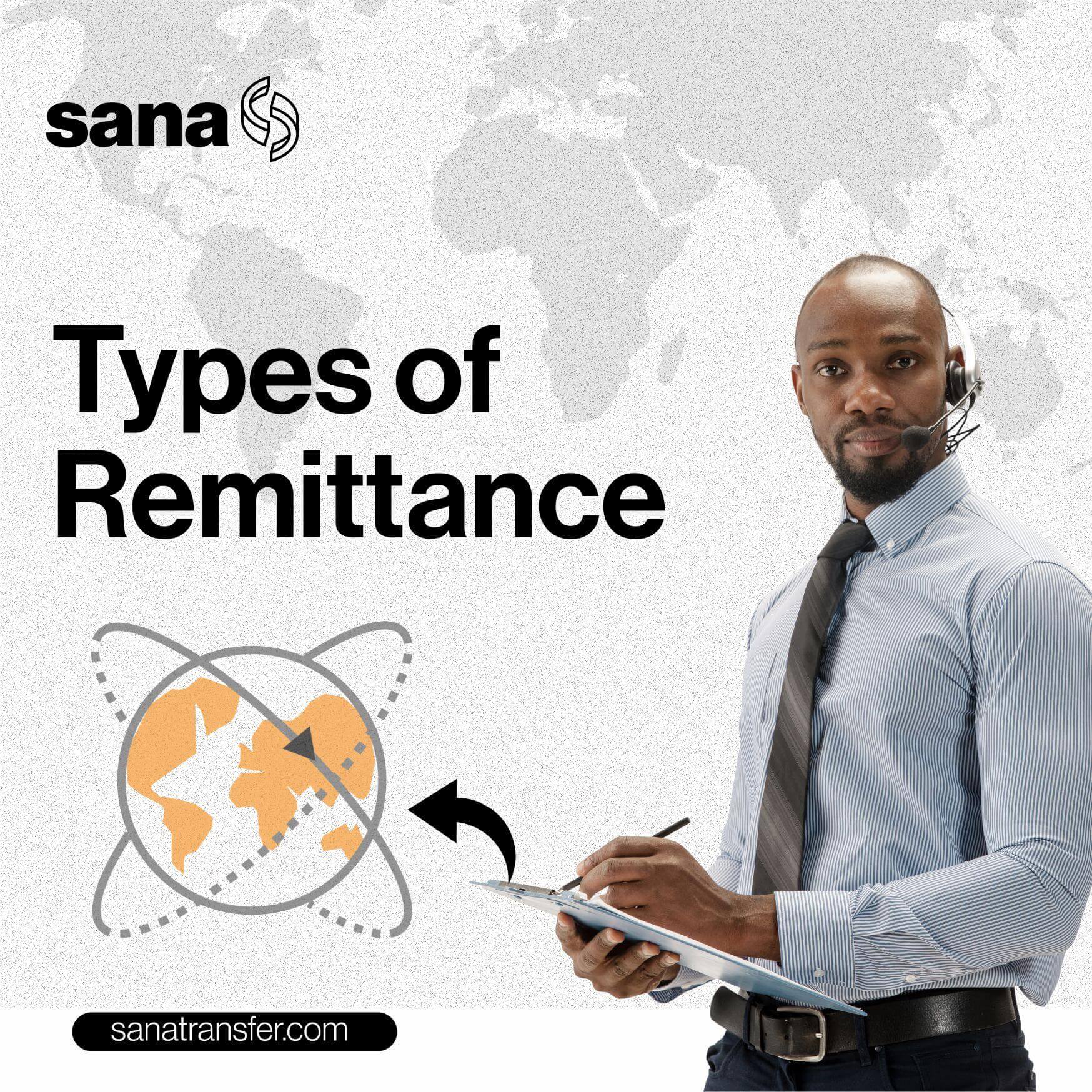Types of Remittance - Everything You need to Know
In this article, we discussed the types of remittance, their benefits, and other details you need to know about the remittance process.

Sending money back home is a very common occurrence for foreigners residing in a country order than theirs. This process is referred to as remittance and it is important that immigrant residents know exactly what the process involves as well as the different types of remittance.
In this article, we'll discuss remittance, the types of remittance, their benefits, the documents you need to send remittance, and other details you need to know about the remittance process.
What is Remittance?
Remittance is simply the exchange of cash using a medium of transfer. Usually, when it comes to remittance, this exchange of money is done internationally.
Remittances involve transfers such as international business payments and people abroad sending money to their families who live in their home country. Usually, these payments are resolved immediately when they are sent from one party to the other.
How helpful is Remittance?
Remittance is a major boost for most people in developing nations. Basically, remitted funds have assisted most households to sustain their businesses and boost their living standards. In developing countries, most families depend on the cash sent from abroad by their family members to sustain themselves and meet their basic needs.
Also, when it comes to the economic growth and all-around development of a country, remittance plays a major role. The economy of many developing countries like Nepal, Kyrgyzstan, Haiti, India, and Honduras relies majorly on remittances.
What are the types of Remittance?
Earlier, we discussed the meaning of remittance and the major role it plays in the growth of the economy in developing countries. Now, let's discuss the different types of remittance, which are based on the method of transaction. There are primarily two types of remittance. They include:
- Inward Remittance
- Outward Remittance
1. Inward Remittance
Inward remittance means transferring cash from one person’s account (the sender) to another person's account (the recipient) internationally. To break down this term to your understanding, here is an example of inward remittance.
When families who have relatives working abroad receive money from these relatives, it is called inward remittance for the families on the receiving end in their home country. Also, when parents send money to their kids abroad, it becomes an inward remittance to the kids in foreign countries.
In essence, any incoming cash transfer from abroad is termed inward remittance in the destination country.
2. Outward Remittance
Outward remittance is simply transferring funds out of a country or cross-border. Essentially, any money you send to a recipient who lives abroad is outward remittance. For instance, if a company transfers cash from their account to the account of its foreign workers residing in another country, it becomes outward remittance for the company.
Outward remittance applies to any country that sends the money, while inward remittance applies to countries that receive the money. Both inward and outward remittance could be foreign remittances.
What are the fees for sending and receiving Remittances?
Usually, your transfer medium will charge a specific fee for any remittance you initiate. However, the transfer fees charged varies depending on your transfer medium and the country of your recipient. Just ensure that you inquire about the remittance charge before the transaction.
SanaTransfer for example offers one of the cheapest remittance rates for international transfers. Download the app for Android or iOS now and signup to get started.
What documents do I need to send money overseas?
Traditionally the major documents you need to transfer money abroad are the sender’s (your) home country’s passport, the beneficiary's (the recipient's) passport copy, as well as the bank statement. Note that you may also need to provide other details of the recipient.
However, digital remittance platforms like SanaTransfer make it simpler and easier. All you need is primarily the receiver’s name, bank account number, phone number and address. Our simplicity and swift delivery make us the best option compared to traditional mediums (e.g bank remittance).
How can I send a Remittance?
There is no single method of remittance payment. Depending on the alternatives available, there are several ways you can remit funds. Here are a few ways you can send a remittance:
1. Money transfer services
The most popular method of remittance payment is via direct money transfer. Basically, in this method, the sender transfers funds directly from his bank account to the receiver’s bank account.
The sender can decide to either transfer the funds from his bank account or make the transfer via debit or credit card. However, the charges each mode of payment incurs differs. Usually, credit cards attract the highest charges. Digital remittance is easily the best option for money transfer services.
2. Banks and credit unions
Many banks in your home country have international branches spread out around the globe. So you can just locate any bank branch of your recipient and perform your transaction.
Also, Credit Unions can help you out. Many credit unions are regulated by people who offer international transfer services to corporations at affordable costs. Essentially, they are in partnership with some banks to make international transfer services through their platform.
3. Money orders
Money orders are a very affordable way to perform international money transfers. You can just deposit them at the bank and give details of the recipient's address and bank account details. This option is a perfect option, especially if you want to evade the high transaction charges.
4. Prepaid cards
Another very convenient and seamless electronic payment option is using your prepaid debit cards. Simply fund your prepaid card, enter the recipient’s details and send the desired amount.
However, you should note that some prepared cards will charge you heavily for executing international transfers. Also, some countries do not support payments sent from prepaid cards.
5. Cheques
Remittance transfers are not just restricted to electronic payments. You can also transfer funds via cheque payment. However, this is the slowest transfer option, because banks take a lot of time to process cheques.
Are Remittances Taxable?
Generally, remittances are taxable and the amount depends on the law of the country. This is because remittances are considered a source of income for the receiver and immensely contribute to the country’s GDP. Some countries remove taxes for any amount of money remitted.
What are the benefits of Remittance?
No economy can sustain itself without trading services and cash. Hence, remittances are a major contributor to the development and growth of a country. Here are some other benefits of remittance:
- International remittance is beneficial in cases when there are natural calamities. People can send money internationally to countries facing natural disasters.
- When money is remitted regularly, the recipients will increase their spending capacity. This leads to more purchases of goods, releasing more money into the economy of the country. When there is more money in a country’s economy, the GDP rises.
- Inward remittance receipt helps to increase the purchasing power of the people. Essentially, when there is more money, people spend more on the goods and services that are available to them. This boosts the production activities of local companies, thereby enhancing the channel of distribution.
Parties involved in Remittances
Generally, four groups are involved in the process of a remit wire transfer. They include:
1. The Sender
The sender is the person who initiates the remittance transaction. Funds are debited from the sender’s account and transferred to another person.
2. Sending agent
This is the first negotiator in the remittance transaction. Usually, a financial institution handles this aspect by collecting the money to be sent, the receiver’s details, method of payment, transaction charges, as well as other information.
3. Receiving agent
The receiving agent is the second negotiator in a remittance transaction. Usually, the receiver’s bank handles this aspect. They help validate the sender's details and discharge the funds to the remittance receiver.
4. Recipient or receiver
This is the last person involved in the process. The recipient is the person who receives the cash in their bank account. This comes after the bank has deducted taxes and foreign exchange fees.
Conclusion
The two main types of remittance are inward and outward remittance. Money sent abroad is termed outward remittance, while money received from people who live abroad is called inward remittance. Note that all remittance transactions incur a charge, which varies depending on the transfer service you use.
SanaTransfer offers easy, fast and secure payment services with better rates and faster payouts for international remittance. Sign up now or download the app for Android or iOS to get started.
